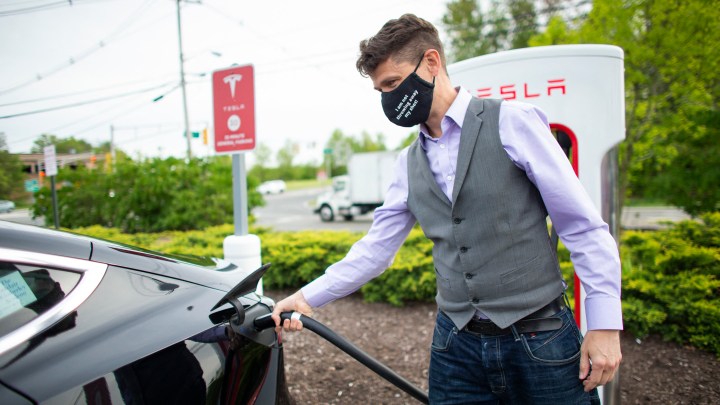
What needs to happen to achieve net zero carbon emissions by 2050?
What needs to happen to achieve net zero carbon emissions by 2050?

President Biden was in Dearborn, Michigan, today, touring the Ford factory where the automaker is building its electric pickup truck. “The future of the auto industry is electric,” the president said. “There’s no turning back.”
The visit coincided with the release of a flagship report by the International Energy Agency that calls for faster and more aggressive action to get to net zero carbon emissions by 2050. The IEA says that by 2030, 60% of cars sold worldwide will need to be electric to meet that goal. Right now, we’re at 5%.
Getting to net zero carbon emissions by 2050 is going to require a lot of change in a short amount of time. “We don’t have a day to lose,” said Rachel Kyte, dean of the Fletcher School at Tufts University.
What the IEA has outlined, she continued, is: “No more oil and gas exploration, no new unabated coal plants should be approved for development. And that should be right now, this year. No ifs, buts or whys.”
The IEA also says countries need to phase out existing coal plants and rely on wind and solar. “[Such] that we will be relying much more quickly and much more completely on modern renewable energy,” said Kyte.
That’s starting to happen already, said Steve Nadel, Executive Director of the American Council for an Energy-Efficient Economy. “Wind and solar will often be the cheapest new source of electricity today. A lot of the new construction is starting to go in that direction,” Nadel said.
One of the challenges of relying more on renewable energy, Nadel added, has always been finding ways to store it for later use. “Think of early morning during the middle of a cold wave, and the wind is calm and the sun’s not shining,” he said, “that’s when we need that storage.”
A lot of the technology we need to start down the path the IEA has laid out to net zero carbon emissions already exists. Even so, said Jason Bordoff, co-founding dean of the Columbia Climate School, there are some problems we have yet to figure out how to solve.
“If you’re gonna think about the things that are harder to decarbonize, like airplanes and big ships and steel and cement, we don’t have all of those tools at commercial scale yet,” Bordoff said.
There’s a lot happening in the world. Through it all, Marketplace is here for you.
You rely on Marketplace to break down the world’s events and tell you how it affects you in a fact-based, approachable way. We rely on your financial support to keep making that possible.
Your donation today powers the independent journalism that you rely on. For just $5/month, you can help sustain Marketplace so we can keep reporting on the things that matter to you.

















